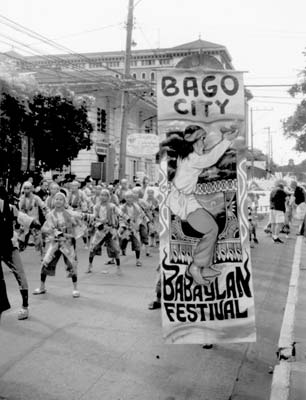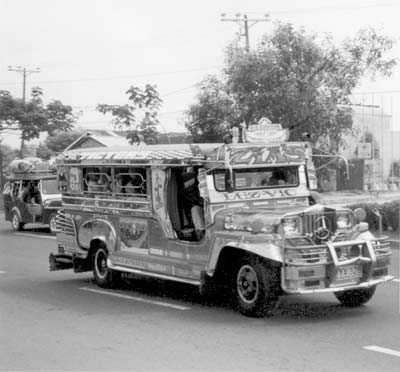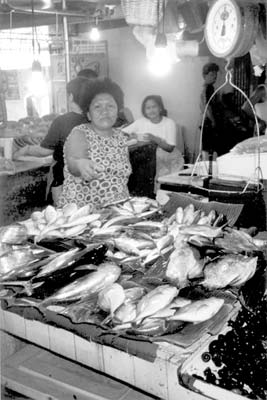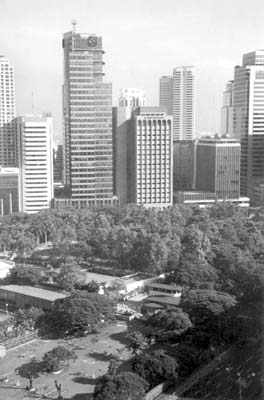Energetic Manila
(First of two parts on the Philippines)
A kind of frenetic mania pervades the urban streetscape as the cultural combine of East and West continues to define itself while the business of daily life goes on. In the Philippines, all journeys seem to begin and end in the sprawling megalopolis that is Manila. One cannot know or hope to understand the modern-day Philippines without comprehending Manila.
An island outpost in Asia controlled for over 350 years by incumbent Western influences (300 years by the Spanish and 50 by the United States), the nation today reflects a decidedly unique cultural landscape that is unmistakably Filipino. I had the opportunity to experience Manila and, later, Cebu, which I will report on in my next column, with a small group of journalists as a guest of the Philippine Tourism Office and Philippine Airlines in early October 2003.
Language-friendly and safe
While the country is predominantly Catholic, reflective of its centuries of Spanish control, few Filipinos today speak Spanish. While there are 85 languages and dialects represented in the Philippines’ population of over 80 million people, English is the language of commerce and is understood and widely spoken in major centers, making the country extremely user-friendly for English-speaking visitors.
While you may think in dollars while visiting, you will operate in pesos, which exchange at approximately 55 to the dollar currently.
It is important to understand that in this spread-out island nation (7,107 islands in total), terrorism concerns, which have been reflected in the mainstream media, are relegated to a few rather isolated islands in the far southern end of the island chain. Those few islands, which have strong Muslim influences, are far removed from areas usually frequented by international visitors.
We felt safe at all times, including on the occasions when we ventured off to explore on our own in both Manila and Cebu. The friendly Filipino persona was punctuated by a pervasive smile that was deliciously infectious.
We were based at the Shangri-la Makati in the upscale Makati City business and tourist sector of Manila. The hotel, rated as the finest in the city, did not disappoint with its superb ambiance and hospitable services.
A few steps from the front entrance of the Shangri-la, shopping malls of various persuasions spread in virtually all directions, beckoning those inclined. My purchases included a tennis racket and an invigorating one-hour sports massage at a posh Gold’s Gym spa for $11.
Services, as opposed to goods, are the great value. While prices in all but the most upmarket malls seemed reasonable, I was left to ponder how the average worker with a salary of about $3 per day gets by. The answer, I learned, is by employing a level of creative enterprise to the challenges of daily life incomprehensible to most Americans.
Jeepneys, which are small buses modified from jeeps left behind at the end of World War II, even today remain the prime source of public transportation for locals. There are literally thousands of these vehicles plying the streets of Manila 24/7 on allotted routes.
Jeepneys often are very colorfully decorated by their owners and are a source of visual delight and amazement to visitors. Some in our group sampled and enjoyed the Jeepney experience.
Those interested can visit the Sarao Jeepney Museum.
Manila touring
My recommendation for a Manila stopover is to do a comprehensive city tour that includes the awe-inspiring American War Memorial with its 17,206 white crosses, including 3,774 crosses without names but which bear the inscription, “Here rests in honored glory a comrade in arms known but to God.”
Our guide advised that experiencing the site triggers powerful emotions for most Americans, especially seniors. For me, the feelings evoked were a combination of anguish, sorrow and, most of all, gratitude.
Also included in Manila touring should be Las Pinas historic corridor, where it is possible at Las Pinas Church to see and hear a giant 13-by-13-foot bamboo organ, the only bamboo organ of its type in the world.
To really understand how Manila has evolved, one must visit Intramuros, the historic base of the city, founded in 1571. Prior to World War II it was one of the finest preserved medieval cities in the world, but much of Intramuros was destroyed in the battle of Manila in 1945. Today, nearly 60 years later, faithful reconstruction continues.
A must in Intramuros is a guided walk around Fort Santiago, which has a storied and, at times, somber history. Also recommended is a visit to Casa Manila, a replica of an 1880s Spanish villa with ornate furnishing and decorative Nara wood plank floors.
Festive Manila
Festivals and costume parades are a way of life in the Philippines. At any given time, especially on weekends, several may be happening in Manila. It is common for touring groups from all provinces outside Manila to periodically journey to the capital city to strut their stuff in parades and festivals.
We experienced both a parade and a festival during our brief visit, which proved to be a photographic panacea. These provided insight into the lifestyles of the regions represented as well as an opportunity to purchase some of their fine handicrafts. I unashamedly took advantage.
Gastronomically, Manila is an East/West melting pot of cuisines. Partake vigorously, ideally based on in-the-know recommendations, but avoid the enticing street stall food, which may well come back to haunt you later.
Admittedly, I did not create an opportunity to experience Manila’s legendary nightlife beyond the restaurant scene. Culturally, Filipinos tend to be remarkably talented musicians and few seem shy about performing. We can learn much from their overtly spontaneous approach to enjoying life.
In my next column I will report on bustling Cebu, the Philippines’ oldest city and most important business and leisure destination outside Manila.
Keck's Beyond the Garden Wall
❝Where East and West collide head on,
yet with enough functional energy
that the resultant mayhem works.❞
— Randy’s take on his brief but eye-popping experience in the pulsating megalopolis that is Manila




